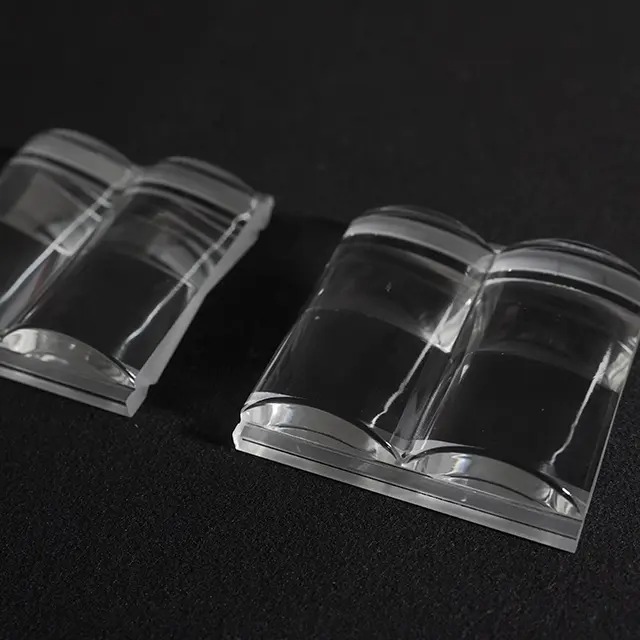
The Evolution of Glass Processing in Modern Optics
Glass processing has transcended traditional manufacturing to become a cornerstone of cutting-edge optical technologies. From industrial control panels to precision optical filters, advanced glass solutions enable innovations across semiconductors, aerospace, healthcare, and consumer electronics. Taiyu Glass exemplifies this transformation, leveraging specialized techniques to produce glass products that meet stringent requirements for durability, thermal stability, and optical clarity. This article explores the science, applications, and future trends shaping the industry.
1. Heat-Resistant Glass: Engineering Resilience for Extreme Environments
1.1 Material Innovations and Temperature Thresholds
Heat-resistant glass relies on compositions like borosilicate (withstands 520–820°C), quartz (softens at ~1,100°C), and glass-ceramics (endures up to 1,500°C). These materials achieve stability through:
Low Thermal Expansion: Boron oxide in borosilicate glass reduces expansion coefficients, preventing cracks under thermal shock.
Ceramization: Glass-ceramics undergo controlled crystallization, enhancing thermal endurance (e.g., induction cooktops).
1.2 Critical Applications
Semiconductor Manufacturing: Quartz glass windows withstand plasma etching at 1,200°C.
UVC/LED Lighting: Borosilicate housings ensure UV transparency while resisting lamp-generated heat.
Aerospace: Quartz viewing windows in spacecraft tolerate re-entry temperatures.
2. Optical Clarity and Precision: The Science of Light Transmission
2.1 Ultra-Low Iron Glass
Taiyu’s Super White Glass minimizes iron impurities, achieving >92% light transmittance and eliminating the greenish tint in standard glass. This is vital for:
2.2 Bandpass Filter Glass
Custom coatings enable precise wavelength selection:
UV/IR Filters: 365nm/395nm bandpass filters for fluorescence microscopy.
Anti-Reflective (AR) Coatings: Reduce reflection loss to <0.5%, enhancing smartphone display readability.
3. Industrial Control Panels: Durability Meets Functionality
3.1 Touchscreen Technologies
Capacitive vs. Resistive: Industrial panels use projected capacitive (PCAP) for multi-touch responsiveness in high-vibration environments.
Durability Enhancements: Chemically strengthened glass (e.g., for B&R HMIs) resists scratches and impacts.
3.2 Environmental Resilience
Panels withstand:
4. Reflective and Anti-Reflective Glass: Balancing Aesthetics and Performance
4.1 Energy-Efficient Reflective Glass
4.2 Anti-Glare Solutions for Displays
Matte Glass diffuses light to minimize eye strain, ideal for:
5. Emerging Trends: Next-Generation Glass Technologies
5.1 High-Refractive-Index Glass
Compositions like La₂O₃-TiO₂ (refractive index ~2.06) enable thinner lenses for AR/VR waveguides. Containerless levitation methods produce defect-free variants for military optics.
5.2 Smart Glass Integration
Taiyu Glass and industry leaders are driving a paradigm shift toward multifunctional, sustainable solutions. Key focus areas include:
AI-Driven Manufacturing: Predictive quality control for zero-defect optics.
Eco-Friendly Formulations: Recycled-content glass-ceramics.
Quantum Optics: Ultra-pure quartz for photonic computing.
English
العربية
Français
Русский
Español
Português
Deutsch
italiano
日本語
한국어
Nederlands
Tiếng Việt
ไทย
Polski
Türkçe
አማርኛ
ພາສາລາວ
ភាសាខ្មែរ
Bahasa Melayu
ဗမာစာ
தமிழ்
Filipino
Bahasa Indonesia
magyar
Română
Čeština
Монгол
қазақ
Српски
हिन्दी
فارسی
Kiswahili
Slovenčina
Slovenščina
Norsk
Svenska
українська
Ελληνικά
Suomi
Հայերեն
עברית
Latine
Dansk
اردو
Shqip
বাংলা
Hrvatski
Afrikaans
Gaeilge
Eesti keel
Māori












